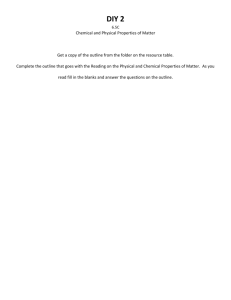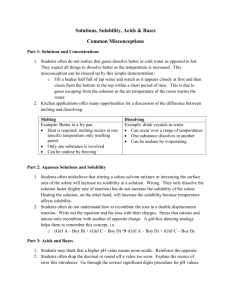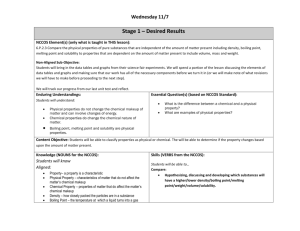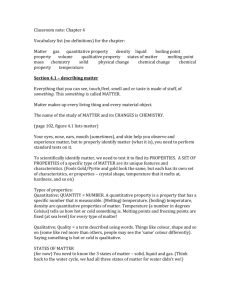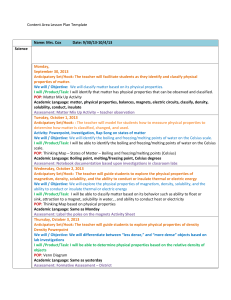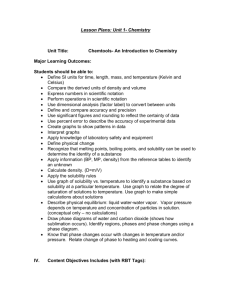Learning Goal
advertisement
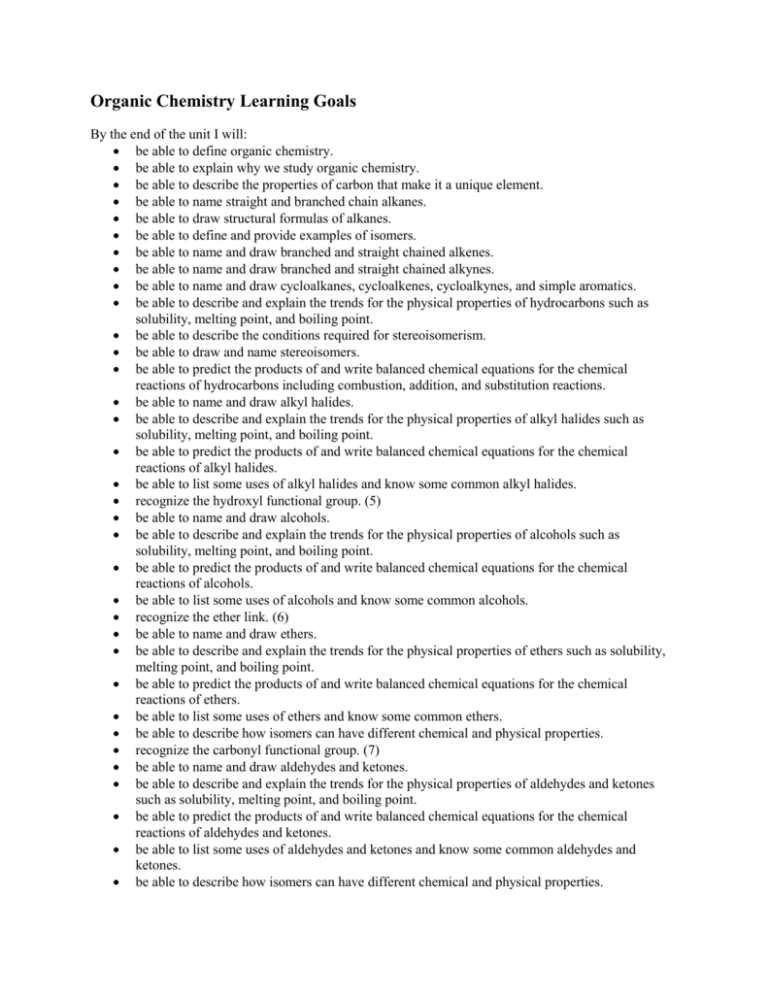
Organic Chemistry Learning Goals By the end of the unit I will: be able to define organic chemistry. be able to explain why we study organic chemistry. be able to describe the properties of carbon that make it a unique element. be able to name straight and branched chain alkanes. be able to draw structural formulas of alkanes. be able to define and provide examples of isomers. be able to name and draw branched and straight chained alkenes. be able to name and draw branched and straight chained alkynes. be able to name and draw cycloalkanes, cycloalkenes, cycloalkynes, and simple aromatics. be able to describe and explain the trends for the physical properties of hydrocarbons such as solubility, melting point, and boiling point. be able to describe the conditions required for stereoisomerism. be able to draw and name stereoisomers. be able to predict the products of and write balanced chemical equations for the chemical reactions of hydrocarbons including combustion, addition, and substitution reactions. be able to name and draw alkyl halides. be able to describe and explain the trends for the physical properties of alkyl halides such as solubility, melting point, and boiling point. be able to predict the products of and write balanced chemical equations for the chemical reactions of alkyl halides. be able to list some uses of alkyl halides and know some common alkyl halides. recognize the hydroxyl functional group. (5) be able to name and draw alcohols. be able to describe and explain the trends for the physical properties of alcohols such as solubility, melting point, and boiling point. be able to predict the products of and write balanced chemical equations for the chemical reactions of alcohols. be able to list some uses of alcohols and know some common alcohols. recognize the ether link. (6) be able to name and draw ethers. be able to describe and explain the trends for the physical properties of ethers such as solubility, melting point, and boiling point. be able to predict the products of and write balanced chemical equations for the chemical reactions of ethers. be able to list some uses of ethers and know some common ethers. be able to describe how isomers can have different chemical and physical properties. recognize the carbonyl functional group. (7) be able to name and draw aldehydes and ketones. be able to describe and explain the trends for the physical properties of aldehydes and ketones such as solubility, melting point, and boiling point. be able to predict the products of and write balanced chemical equations for the chemical reactions of aldehydes and ketones. be able to list some uses of aldehydes and ketones and know some common aldehydes and ketones. be able to describe how isomers can have different chemical and physical properties. recognize the carboxyl functional group. (8) be able to name and draw carboxylic acids. be able to describe and explain the trends for the physical properties of carboxylic acids such as solubility, melting point, and boiling point. be able to predict the products of and write balanced chemical equations for the chemical reactions of carboxylic acids. be able to list some uses of carboxylic acids and know some common carboxylic acids. recognize the ester functional group. (9) be able to name and draw esters. be able to describe and explain the trends for the physical properties of esters such as solubility, melting point, and boiling point. be able to predict the products of and write balanced chemical equations for the chemical reactions of esters. be able to list some uses of esters and know some common esters. recognize the amino functional group. (10) be able to name and draw amines. be able to describe and explain the trends for the physical properties of amines such as solubility, melting point, and boiling point. be able to predict the products of and write balanced chemical equations for the chemical reactions of amines. be able to list some uses of amines and know some common amines. recognize the amide functional group. (11) be able to name and draw amides. be able to describe and explain the trends for the physical properties of amides such as solubility, melting point, and boiling point. be able to predict the products of and write balanced chemical equations for the chemical reactions of amides. be able to list some uses of amides and know some common amides. be able to identify the functional group(s) required for an addition polymerization reaction. (12) be able to describe an addition polymerization reaction. be able to write addition polymerization reactions given the reactants or the products. be able to identify the functional group(s) required for an condensation polymerization reaction. (13) be able to describe an condensation polymerization reaction. be able to write condensation polymerization reactions given the reactants or the products.
